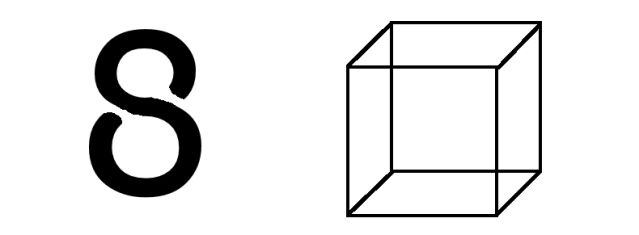Imagination
Can Your Imagination Be Measured?
A new method has been developed to measure the vividness of visual imagination.
Posted July 25, 2024 Reviewed by Gary Drevitch
Key points
- Measuring the vividness of people's visual imagination has traditionally relied on self-report surveys.
- A new study tests whether imagining objects leads to similar conditioning effects as seeing those objects.
- Results were highly correlated between seeing and imagining, supporting the validity of the measure.
- Research is still needed to link implicit and self-report measures of visual imagery.
The ability to conjure visual imagery varies considerably across people. On the high end of the spectrum, people with hyperphantasia report having extremely clear imagery. When they think about a red apple, they see a red apple in their mind's eye as clearly as if they were looking at a real apple. On the other end of the spectrum, people with aphantasia report having no visual imagery at all. When they close their eyes and try to imagine a red apple, they can think about the apple and talk about its properties, but there is no associated mental imagery.
Reliance on self-report measures
Unfortunately, much of the research on visual mental imagery has relied on self-report measures, such as the Vividness of Visual Imagery Questionnaire (VVIQ; Marks, 1973). The VVIQ asks participants to close their eyes and imagine different types of scenes and objects, and then report how vivid their imagery was on a 5-point scale (ranging from 1 = "Perfectly clear and as vivid as normal vision" to 5 = "No image at all, you only 'know' that you are thinking of the object").
Self-report measures such as these are subject to bias and unreliability across individuals. For example, one person may interpret "5" on the scale differently than another, leading to inconsistency in the interpretation of results. Researchers have considered other ways of assessing people's imagery without asking them directly. For example, some researchers have shown that pupil responses to real and imagined scenes correlate (Laeng et al., 2014). Other researchers have used neuroimaging techniques to measure the degree to which visual areas of the brain are engaged when someone is imagining (Gannis et al., 2004).
Priming vs. adaptation
In a new study by Mozhdehfarahbakhsh and colleagues, researchers put forward a novel method of estimating the vividness of people's visual imagery by using a priming/adaptation task. In this type of task, exposure to one object biases the perception of a subsequent object, either in the direction of the exposure stimulus (called a priming effect) or in the direction opposite the exposure stimulus (called an adaptation effect). In their study, participants were shown ambiguous objects like the ones below:

The image on the left could be interpreted as either an 8 or an S. The image on the left (known as the Necker cube) could be interpreted as having the front surface either on the left or on the right.
In each "real condition trial," participants were first exposed for five seconds to an *unambiguous* version of the images (e.g. an image clearly showing an 8 or an S, or clearly showing an left-forward or right-foward cube), and then they were briefly shown the ambiguous image to classify one way or the other. In each "imaginary condition trial," participants were asked to imagine an unambiguous image, and then they were shown the ambiguous image to classify.
The results indicated that some participants tended to show overall priming effects while others tended to show adaptation effects. That is, some participants were more likely to perceive the ambiguous stimulus as belonging to the same category as the exposure stimulus (priming) while others were more likely to perceive the ambiguous stimulus as belongning to the opposite category (adaptation). The authors argue that the use of a single exposure period (5 seconds) could have led to this discrepancy across participants, as the timing of these effects varies across individuals.
Linking perception and imagination
More intriguingly, the researchers found significant correlations between the priming (or adaptation) effects across the real and imagery conditions of the experiments. In other words, participants who showed priming effects in the real condition were likely to also show priming effects in the imagery condition. Conversely, participants who showed adaptation effects in the real condition were very likely to also show adaptation effects in the imagery condition. These correlations were present for both the number-letter stimuli and for the Necker cube stimuli.
The authors conclude that this methodology can be used to quickly and implicitly measure the vividness of individuals' mental imagery. The degree to which imagining one object (e.g. an S or an 8) influences the way you perceive a subsequent object (e.g. an ambiguous S/8 stimulus) can be considered as a measure of the vividness of one's imagery.
However, it should be noted that participants in this study also completed the VVIQ, and researchers found no correlation between VVIQ scores and the new proposed measure of imagery. Therefore, future studies will be needed to determine the reliability of this measure and to fill the gap between self-report and implicit measures of mental imagery.
References
Mozhdehfarahbakhsh, A., Hecker, L., Joos, E., & Kornmeier, J. (2024). Visual imagination can influence visual perception–towards an experimental paradigm to measure imagination. Preprint: https://doi.org/10.21203/rs.3.rs-4467655/v1
Marks, D. F. (1973). Visual imagery differences in the recall of pictures. British journal of Psychology, 64(1), 17-24.
Laeng, B., & Sulutvedt, U. (2014). The eye pupil adjusts to imaginary light. Psychological science, 25(1), 188-197.
Ganis, G., Thompson, W. L., & Kosslyn, S. M. (2004). Brain areas underlying visual mental imagery and visual perception: an fMRI study. Cognitive Brain Research, 20(2), 226-241.


